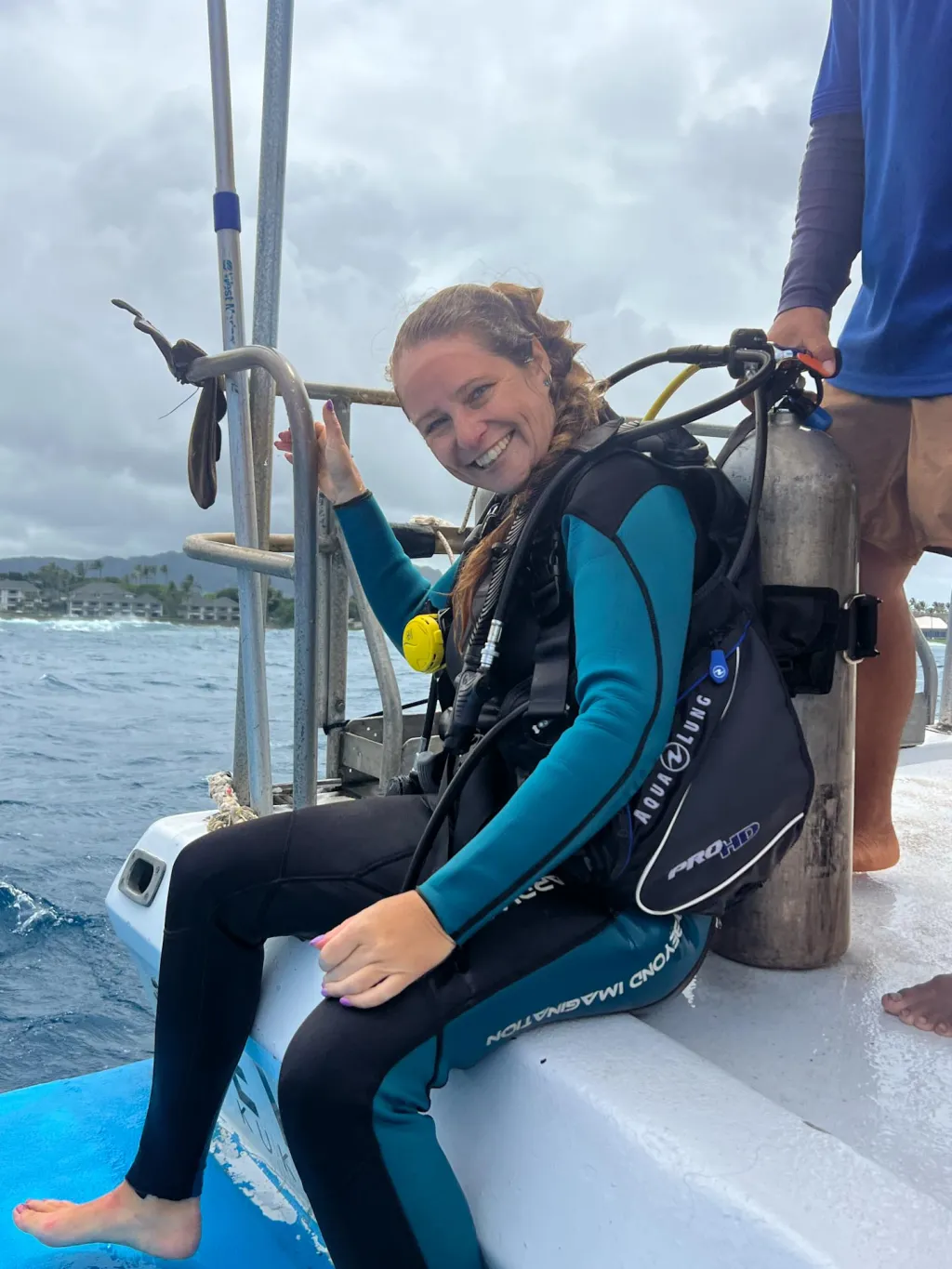Emily Broderick and Fathom Five Divers: A Journey into the Depths of Fish Bowl and Sheraton Caverns

Introduction to Emily Broderick Beneath the surface of our vast oceans lies a world of unparalleled diversity and beauty, a world where Emily Broderick, a marine science teacher, feels most at home. With a wealth of knowledge in biology and a penchant for adventure, Emily’s enthusiasm for marine life is as deep as the waters she explores. Her collaboration with Fathom Five Divers on a recent exploration offers an enchanting glimpse into two of the sea’s captivating dive sites: Fish Bowl and Sheraton Caverns.
Dive with Fathom Five Divers The team at Fathom Five Divers is known for their expertise and passion for the ocean, making them the perfect companions for Emily’s underwater expeditions. Their journey began at the break of dawn, with the sun casting its first light on the calm sea, as they set out to explore the wonders beneath the waves.
Exploring Fish Bowl Fish Bowl is a site that mirrors an underwater coliseum, teeming with life, where fish of all shapes and sizes gather in a spectacular display of natural abundance. Emily’s first dive here was filled with the joy of witnessing a diverse ecosystem thriving against the odds. She noted the bowl’s healthy fish population, a sign of a resilient environment where life continues to flourish.
Coral Health and Ecosystem Observations As a marine biologist, Emily’s observations were twofold: the joy of seeing a thriving ecosystem and concern over the signs of distress within it. She pointed out coral bleaching, diseases, and the ominous presence of invasive species like the peacock grouper, threats that could tip the delicate balance of this underwater community.
Highlights from Fish Bowl The vibrancy of the Fish Bowl’s coral left a lasting impression on Emily. She recounted swimming through clouds of colorful fish, feeling a profound connection with the ocean as she moved in harmony with its inhabitants. It was a reminder of the ocean’s fragile beauty and the importance of conservation efforts.
Sheraton Caverns After the Fish Bowl, the team ventured to Sheraton Caverns, where the play of light and shadow creates an ethereal landscape. The caverns, with their sweeping underwater vistas, offer a different kind of tranquility, one that Emily described as both awe-inspiring and humbling.
Marine Life at Sheraton Caverns Sheraton Caverns is a sanctuary for a variety of marine species, each playing a vital role in the ecosystem. Emily was thrilled by the sight of Hawaiian green sea turtles and rare nudibranchs, which are often elusive to the average diver. It was a testament to the rich biodiversity that the caverns support.
Conservation Efforts Each dive is more than a recreational activity for Emily; it’s a chance to engage with the ocean in a meaningful way. She emphasized the importance of sustainable diving practices, such as not touching the coral and being mindful of one’s buoyancy to avoid damaging the reef structure.
Marine Science and Education Back on dry land, Emily’s experiences are transformed into compelling narratives for her students. She uses her dives to illustrate lessons on marine ecosystems, emphasizing the interconnectedness of life forms and the human impact on aquatic habitats.
Diving Conditions and Safety Emily stressed the importance of respecting the ocean’s conditions, noting that currents, visibility, and marine life behaviors are crucial factors to consider for a safe dive. Her approach is to always be prepared, be aware, and never underestimate the power of the sea.
Diving for Science versus Recreation The balance between scientific exploration and recreational enjoyment is delicate. Emily advocates for diving with a purpose, whether it’s for research, conservation, or education, while also savoring the sheer pleasure of being underwater.
Photography and Documentation Armed with her camera, Emily captures more than just memories; she documents the changing conditions of marine habitats. Her photographs serve as valuable scientific records and as a means to raise awareness about the need for ocean conservation.
Future of the Reefs Emily’s hope for the future of the reefs is steeped in cautious optimism. She recognizes the challenges posed by climate change but believes in the collective power of informed individuals to make a difference.
Interview Insights Through Emily’s lens, we gain insight into the resilience of marine life and the actions required to protect it. She shared stories of recovery and adaptation, which instill a sense of hope and responsibility in all of us.
Conclusion Our dive with Emily Broderick and Fathom Five Divers was an immersive experience that went beyond a simple ocean tour. It was an educational journey that highlighted the beauty of the underwater world, the challenges it faces, and the urgent need for conservation. By exploring Fish Bowl and Sheraton Caverns, we not only discovered the ocean’s mysteries but also its plea for protection. Emily’s dedication to marine science education reminds us that every splash, every dive, and every lesson is a step towards preserving the aquatic world for future generations.
Frequently Asked Questions (FAQs)
- What are the unique features of Fish Bowl and Sheraton Caverns dive sites? Fish Bowl is renowned for its high density of fish and vibrant coral life, while Sheraton Caverns is famous for its stunning geological formations and the unique light effects within the caverns. Both sites offer divers a chance to see a variety of marine life in their natural habitats.
- How does Emily Broderick integrate her diving experiences into teaching? Emily uses her diving experiences to bring real-world examples into her classroom, teaching students about marine biology, ecology, and the importance of conservation through her firsthand encounters with marine life.
- What conservation efforts can divers participate in to help protect reef ecosystems? Divers can aid conservation by practicing responsible diving habits, like maintaining proper buoyancy, avoiding contact with coral, participating in reef cleanups, and spreading awareness about marine conservation issues.
- Why is photography important for documenting marine life, according to Emily Broderick? Photography serves as a powerful tool for documentation and education, allowing Emily to capture and share the state of marine ecosystems. It also helps in monitoring changes in reef health and biodiversity over time.
- What is Emily Broderick’s outlook on the future of reef conservation? Emily is cautiously optimistic about the future of reefs. She believes that through education, research, and proactive conservation measures, it is possible to mitigate the negative impacts of human activity and climate change on marine environments.
